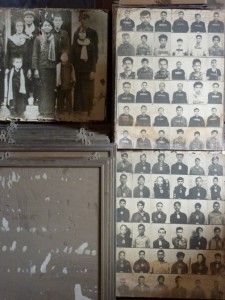
Re/presenting witnessing: considering displacements – location/ time
A talk by Carla Rose Shapiro
Friday, March 30, 2012, 2:00-4:00
LB-1014, Library Building
1455 de Maisonneuve Blvd W.
Co-sponsored by the Department of Art History and the Montreal Institute for Genocide and Human Rights Studies.
Covering differing modes of persecution, ranges of geography, and points of time, Dr. Shapiro will present a comparative and connective discussion of the use of survivor narratives within exhibition spaces. This presentation will draw on her extensive documentary work with diasporic survivor communities which includes the collection of first person accounts, family photographs, and material culture, and their reconfiguration as features in permanent and traveling exhibitions. Dr. Shapiro’s talk will draw from her in-situ museum fieldwork, and critical studies of curatorial practice in reference to the representation of victims of mass violence. The particular cultural, ethnographic, and political considerations of such representations will be explored with reference to Holocaust, Rwandan, Cambodian, and Darfurian survivors. A central question for Dr. Shapiro is whether representational approaches employed in Holocaust museums to convey the destruction of European Jewry offer a fitting template to represent the victims of other genocides.
Carla Rose Shapiro is currently a research associate at the Asian Institute, Munk School of Global Affairs, University of Toronto, and an Associate Curator at the Institute of Contemporary Culture at the Royal Ontario Museum. She received her PhD from The University of Sussex and her Masters of Museum Studies degree from The University of Toronto. Her scholarly evolution has taken her from the particulars of the Holocaust, to broader concerns of genocide, human rights and social justice and their nexus in contemporary culture. She has written about strategies of representing victim experiences within museum, gallery, and community space exhibitions — assessing their efficacy as points of embarkation for both historical learning and memorative practices. Her own curatorial praxis engages historiographic, documentary, and artistic approaches to textually and visually representing the experiences of victims of mass violence. Dr. Shapiro’s most recent research focuses on the transformation of exhibition narratives, post-conflict to the present day, at the Tuol Sleng Genocide Museum in Phnom Penh, and The War Remnants Museum in Ho Chi Minh City.



